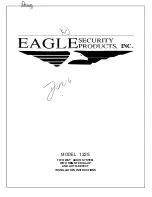
10
For your safety
It is also important that you:
■
Do not remove the RF exposure label from the radio.
■
Ensure this RF exposure information accompanies the
radio when it is transferred to other users.
■
Do not use the radio if you do not adhere to the
guidelines on controlling your exposure to RF.
Controlling your exposure to RF energy
This radio emits radio frequency (RF) energy or radio waves
primarily when calls are made. RF is a form of
electromagnetic energy (as is sunlight), and there are
recommended levels of maximum RF exposure.
To control your exposure to RF and comply with the
maximum exposure limits for occupational/controlled
environments, follow these guidelines:
■
Do not talk (transmit) on the radio more than the rated
transmit duty cycle. This is important because the radio
radiates more energy when it is transmitting than when it
is receiving.
■
While you are transmitting (talking or sending data) on
the radio, you must ensure that there is always a distance
of 35 inches (0.9m) between people and the antenna.
This is the minimum safe distance.
■
Use the radio only with Tait-approved antennas and
attachments, and make only authorized modifications to
the antenna otherwise you could damage the radio and
violate FCC regulations.
For more information on what RF energy is and how to
control your exposure to it, visit the FCC website at
www.fcc.gov/oet/rfsafety/rf-faqs.html
.
Compliance with RF energy exposure standards
This two-way radio complies with these RF energy exposure
standards and guidelines:
Содержание TM8235
Страница 1: ...TM8235 Mobile Radios User s Guide MMA 00051 04 Issue 4 February 2013 ...
Страница 60: ......
Страница 61: ......










































